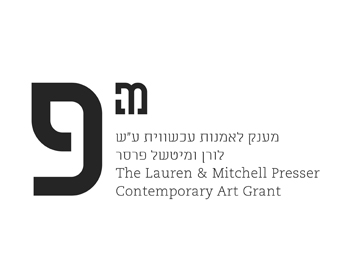The artistic ensemble presented at the exhibition is incisive and sweeping in its color and forms. It comprises new works – all from the last past year – that feature portraits of individuals in the private sphere, either at the artist’s apartment or in those of others. Some of the subjects are close friends of hers, others are people she encountered at random in the street and invited into her home-studio, to sit as her models. Alongside them are paintings of room interiors, still lifes that are also entirely human portrayals. And there are also paintings of incidents outside – in the street, in the neighborhood – which captured her attention. The works are based on a process of painting from observation, over a period of days and weeks. They began with drawings and charcoal sketches on paper, which she then produced in acrylic on canvas.
Worke observes her immediate surroundings and tries to decipher the sight itself, the essence of the gaze. It is not a passive gaze but an active one, based on continual conscious choice: a choice to see the people, the situations, the interiors of the rooms, and the cityscapes outside; a deliberate choice to use traditional painting methods, and subvert them; a choice to enter into a dialogue with the history of art, amidst a determination to be instantly engaged by what is happening before her eyes. Worke cannot help but paint, cannot help but experience the passage of time and the space, which is fixed yet continually changing. With a direct gaze, in a continual quest for beauty in real life and ways to express it, she lives and breathes the painting, dwells within it. As Maurice Merleau-Ponty points out in his text “Eye and Mind,” “Seeing is not a certain mode of thought or presence to self; it is the means given me for being absent from myself, for being present from within at the fission of Being only at the end of which do I close up into myself.” [1] Each one of Worke’s paintings is a marvelous and meticulous arrangement of colors and figures, through which one can touch reality at the fission of Being at a particular point in time and space.
[1] Maurice Merleau-Ponty, “Eye and Mind,” The Primacy of Perception, ed. James M. Edie, trans. Carleton Dallery (Evanston: Northwestern University Press, 1964); Revised by Michael Smith in The Merleau-Ponty Aesthetics Reader, ed. Galen A. Johnson (Evanston: Northwestern University Press, 1993), p. 17.
Less Reading...
